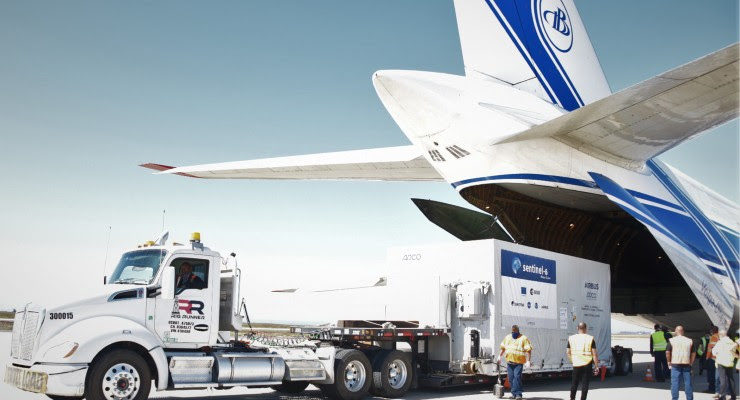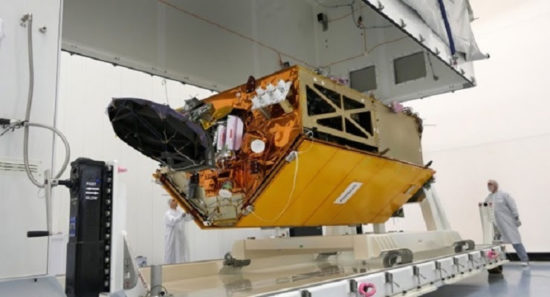
The latest generation of ocean-monitoring satellite, fitted with three high-tech sensors designed and built by engineers at NASA’s Jet Propulsion Laboratory, arrived at Vandenberg Air Force Base Thursday for final preparations ahead of its planned Nov. 10 launch, JPL representatives said.
The Sentinel-6 Michael Freilich spacecraft was brought to the air force base, which also serves as a U.S. Space Force base, by airplane after from a lab in Germany, JPL announced Friday in a written statement. After blasting into orbit atop a SpaceX Falcon 9 rocket, the satellite will examine the Earth’s ocean levels, measuring 90% of their heights within a centimeter of accuracy.
“The spacecraft had a smooth trip from Europe and is in good shape,” JPL Mission Project Manager Parag Vaze said. “Final preparations are underway to see the satellite safely into Earth orbit in a little under seven weeks.”
The spacecraft carries three specialized instruments designed by JPL: The Advanced Microwave Radiometer, the Global Navigation Satellite System – Radio Occultation and the Laser Retroreflector Array.
In addition to taking precise measurements of the planet’s ocean levels, “Instruments aboard the spacecraft will also provide atmospheric data that will improve weather forecasts, help to track hurricanes, and bolster climate models,” according to the JPL statement.
“Although Sentinel-6 Michael Freilich has already undergone rigorous testing, it will go through a final checkout at the SpaceX payload processing facility at Vandenberg to verify that the satellite is healthy and ready for launch,” the statement added.
The satellite is named after a former director of NASA’s Earth Science Division and “an instrumental figure in advancing ocean observations from space.”
The probe has a twin, dubbed Sentinel-6B, which is slated to launch in 2025.
ESA Project Manager Pierrik Vuilleumier said the path up to know “has been a long journey of planning, development, and testing for the mission team.”

“We are proud to work with our international partners on such a critical mission for sea level studies and are looking forward to many years of Sentinel-6 Michael Freilich taking critical sea level and atmospheric data from orbit,” he said.
The mission is expected to bring a great deal of new discoveries, according to NASA Earth Science Division Director Karen St. Germain.
“The Sentinel-6 Michael Freilich satellite will extend our observation record of global sea level, advance our understanding of the Earth as a system, and inform decision-makers, from federal to local levels, who must manage the risks associated with rising sea level,” she said.
More information on NASA’s efforts to study sea levels is available online at sealevel.nasa.gov.
See also:













 1 comment
1 comment


